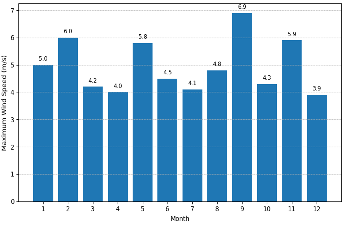Development of a Mathematical Model to Predict Wind Energy Potential and Vertical Axis Wind Turbine Efficiency
DOI:
https://doi.org/10.56862/irajest.v1i1.133Keywords:
Renewable Energy, Power, Potency, Wind TurbineAbstract
The world's energy supply remains highly dependent on fossil fuels, such as petroleum, coal, and natural gas, which are non-renewable. Due to their limited availability, the development of alternative energy sources is crucial. Renewable energy options include biomass, solar energy, wind energy, and small-scale hydropower. Among these, wind energy is considered relatively clean, environmentally friendly, and free from carbon dioxide emissions. The design of wind turbines must be adapted to local wind profiles to achieve optimal efficiency. This study focuses on the performance of vertical axis wind turbines (VAWTs) using linear regression analysis to examine the relationship between wind speed and corrected power output. The results indicate a significant effect of wind speed on turbine performance, showing that potential wind power in an area is a key factor in determining the energy output of VAWTs. These findings highlight the importance of designing turbines effectively and selecting suitable sites to optimize renewable energy utilization.

Downloads
Published
How to Cite
Issue
Section
License
Copyright (c) 2025 IRA Journal of Engineering Science and Technology

This work is licensed under a Creative Commons Attribution-ShareAlike 4.0 International License.









